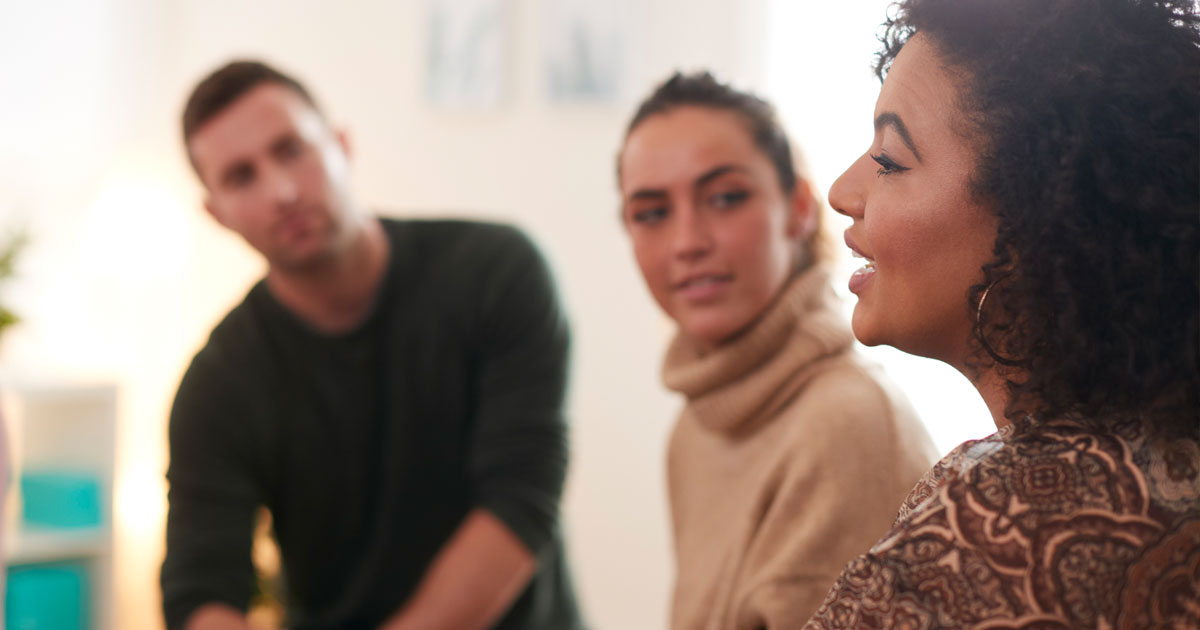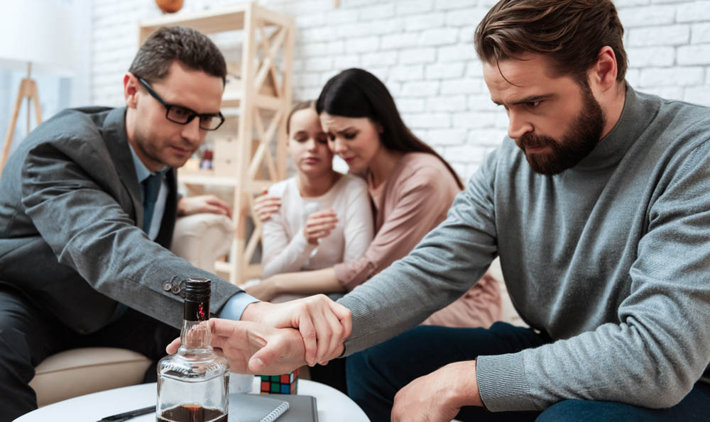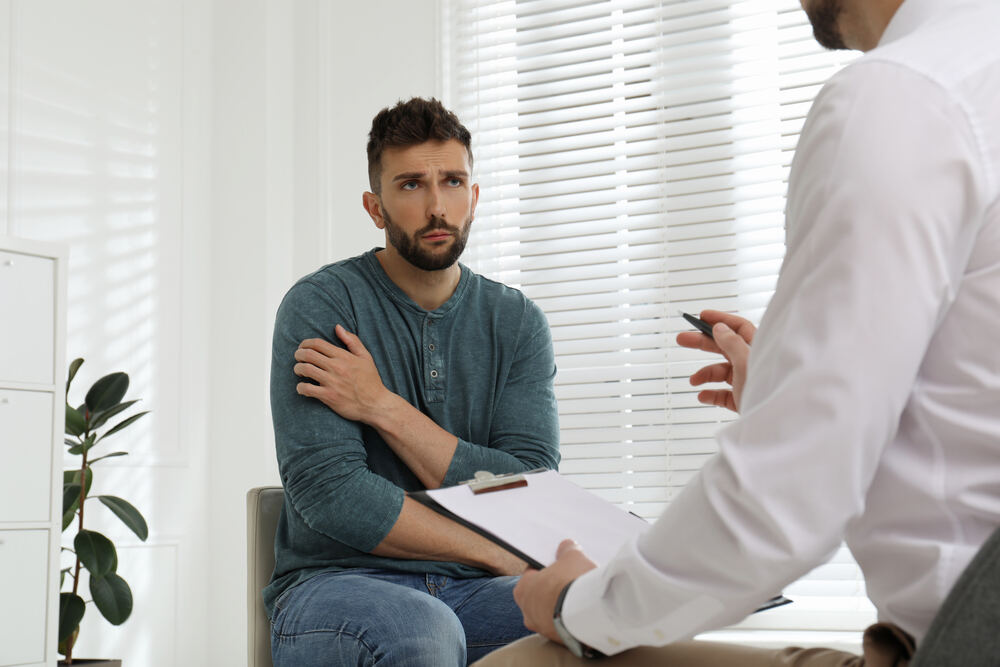
Studies suggest that up to 90% of people who try to quit drinking will experience at least one relapse. In this blog post, we'll explore 50 alcohol relapse statistics to help you better understand the challenges you may face while trying to stay sober.
Top 10 Alcohol Relapse Statistics
- 40-60% of people in recovery from alcohol addiction will experience at least one relapse.
- The highest relapse rates occur within the first six months after quitting drinking, with up to 80% of people experiencing a relapse during this time period.
- People who have been sober for longer periods of time are less likely to relapse. For example, the risk of relapse drops below 15% after five years of sobriety.
- Men are more likely than women to experience an alcohol relapse, with some studies showing that men are twice as likely to relapse as women.
- Stress is a major trigger for alcohol relapse, with up to 90% of people citing stress as a factor in their relapse.
- Other common triggers for alcohol relapse include social pressure, boredom, and negative emotions like sadness or anger.
- Among AA members, the risk of relapse is still relatively high - around 50% within the first year of membership.
- Co-occurring mental health conditions like depression or anxiety can increase the risk of alcohol relapse. In fact, up to half of all people with a substance use disorder also have a co-occurring mental health condition.
- Having a strong support system can help reduce the risk of alcohol relapse. This may include family members, friends, therapists, or other healthcare professionals.
- People who have undergone treatment for alcohol addiction multiple times may be at higher risk for future relapses.

How Many People Experience Alcohol Relapse?
- Up to 90% of people who try to quit drinking will experience at least one relapse.
- Among people in recovery from alcohol addiction, 40-60% will experience at least one relapse.
- The highest relapse rates occur within the first six months after quitting drinking, with up to 80% of people experiencing a relapse during this time period.
10 Most Common Reasons For Addiction Relapse
- Stress: As mentioned earlier, stress is one of the most common triggers for addiction relapse. Studies suggest that up to 90% of people cite stress as a factor in their relapse.
- Social Pressure: Being in social situations where others are drinking or using drugs can be a strong trigger for relapse. Up to 50% of people have reported that social pressure was a factor in their relapse.
- Negative Emotions: Negative emotions like sadness, anger, and frustration can be difficult to manage during recovery. Up to 70% of people report experiencing negative emotions prior to their relapse.
- Boredom: Having too much free time and not knowing how to fill it can lead to boredom, which may increase the risk of relapse. Up to 30% of people report boredom as a factor in their relapse.
- Lack of Support: A lack of support from family members, friends, or healthcare professionals can make it difficult for someone to stay sober. Studies show that having a supportive social network can significantly reduce the risk of relapse.
- Co-occurring Mental Health Conditions: People with co-occurring mental health conditions like depression or anxiety are at higher risk for addiction relapse. Up to half of all people with a substance use disorder also have a co-occurring mental health condition.
- Overconfidence: Feeling overconfident in one's ability to resist temptation and maintain sobriety is another common reason for addiction relapse. Up to 25% of people report feeling overconfident prior to their relapse.
- Lack of Coping Skills: Learning healthy coping skills is an important part of recovery. Without these skills, it can be difficult for someone to manage triggers and cravings. Up to 60% of people report lacking coping skills prior to their relapse.
- Poor Self-Care: Neglecting self-care, such as proper nutrition and exercise, can make it more difficult for someone to stay sober. Up to 40% of people report poor self-care as a factor in their relapse.
- Lack of Structure: A lack of structure or routine can make it difficult for someone to stay on track with their recovery. Up to 30% of people report a lack of structure as a factor in their relapse.
How Long Does it Take to Relapse After Quitting Drinking?
- The highest risk of relapse occurs within the first six months after quitting drinking, with up to 80% of people experiencing a relapse during this time period.
- People who have been sober for longer periods of time are less likely to relapse. For example, the risk of relapse drops below 15% after five years of sobriety.
- Studies suggest that between 30-50% of people who have been sober for more than five years will experience a relapse at some point in their lives.

What are the most common relapse triggers?
- Stress is a major trigger for alcohol relapse, with up to 90% of people citing stress as a factor in their relapse.
- According to recent studies, up to 60% of people who suffer from alcohol addiction have experienced trauma in their past. Trauma can be a significant trigger for alcohol relapse.
- Studies suggest that up to 50% of people who attend social events where alcohol is present will experience an urge to drink.
- One study found that up to 80% of people in recovery from alcohol addiction reported experiencing cravings at some point during their sobriety journey.
What is the relapse rate for alcoholics in recovery?
- The relapse rate for alcoholics in recovery is between 40-60%.
- Within the first year of recovery, up to 50% of people will experience a relapse.
- After five years of sobriety, the risk of relapse drops below 15%.
What is the cost of alcoholism to society?
- In the United States, alcohol misuse cost the economy $249 billion in 2010.
- Alcohol use is a contributing factor in approximately 88,000 deaths in the US each year.
- Up to 40% of hospital beds in the US are used to treat health conditions related to alcohol use.
- The cost of lost productivity due to alcohol-related illnesses and injuries is estimated at $179 billion per year in the US.
- In Europe, it is estimated that alcohol-related harm costs €155 billion annually.
- In Canada, it is estimated that alcohol-related harm costs $14.6 billion per year.
- According to a study published in The Lancet, alcohol consumption was responsible for 5.1% of all global deaths and 5.8% of all global disability-adjusted life-years (DALYs) in 2016.
When Is Alcohol Relapse Most Likely?
- Studies suggest that up to 60% of people who suffer from alcohol addiction have experienced trauma in their past. Trauma can be a significant trigger for alcohol relapse.
- According to recent studies, up to 50% of people who attend social events where alcohol is present will experience an urge to drink.
- One study found that up to 80% of people in recovery from alcohol addiction reported experiencing cravings at some point during their sobriety journey.
- Some studies showing that the risk increases by as much as 15% with each additional attempt at treatment.

Alcohol Recovery Statistics
- Approximately 30% of people who seek treatment for alcohol addiction have a successful recovery.
- Out of those who do relapse, approximately 60% do so within the first year after quitting drinking.
- Only about 10% of people who try to quit drinking without any form of treatment are able to maintain sobriety.
- The use of medication-assisted treatment (MAT) can increase the likelihood of successful recovery by up to 50%.
- Studies suggest that participation in these programs can increase the likelihood of successful recovery by up to 30%.
Types Of Alcohol Relapses (Slip, Lapse, Relapse)
- A slip is a brief and minor return to drinking or drug use. Studies suggest that up to 50% of people in recovery from alcohol addiction will experience at least one slip.
- A lapse is a more significant return to drinking or drug use, but it does not necessarily mean that the person has completely abandoned their recovery efforts. Up to 80% of people who experience a lapse will eventually return to sobriety.
- A relapse is a complete return to alcohol or drug use and the abandonment of recovery efforts. The relapse rate for alcoholics in recovery is between 40-60%. Within the first year of recovery, up to 50% of people will experience a relapse.
FAQs
What is considered an alcohol relapse?
An alcohol relapse is when someone who has previously quit drinking begins to drink again.
Why do so many people relapse after quitting drinking?
There are many reasons why people relapse after quitting drinking, including stress, social pressure, negative emotions, boredom, lack of support, co-occurring mental health conditions, overconfidence, lack of coping skills, poor self-care and a lack of structure or routine.
What can be done to prevent alcohol relapse?
There are many things that can be done to reduce the risk of alcohol relapse. These include building a strong support system, learning healthy coping skills, practicing good self-care habits and developing a structured routine.
Is it common for people to relapse multiple times?
Yes, it is common for people to experience multiple relapses while recovering from alcohol addiction. In fact, some studies suggest that up to 90% of people who try to quit drinking will experience at least one relapse.
Can medication-assisted treatment (MAT) help prevent alcohol relapse?
Yes, medication-assisted treatment (MAT) can increase the likelihood of successful recovery by up to 50%. MAT involves using medications like naltrexone or acamprosate in conjunction with therapy and other forms of support.
How long does it take for someone to recover from alcohol addiction?
Recovery from alcohol addiction is a lifelong process. While some people may be able to achieve sobriety quickly and maintain it long-term, others may experience multiple periods of recovery and relapse throughout their lives.
How can thoughts & cravings for alcohol lead to a relapse?
Thoughts and cravings for alcohol can be powerful triggers for relapse. When someone in recovery is exposed to these triggers, they may start to feel an urge to drink. This urge can become stronger if they don't have the necessary coping skills or support to manage it.
If the urge becomes too strong, they may give in and relapse. To reduce the risk of relapse, it is important for people in recovery to identify their triggers and develop strategies for managing them. It is also important to have a strong support system in place that can provide emotional and practical help when needed.
How can I prevent alcohol relapse?
The best way to prevent alcohol relapse is to develop a comprehensive recovery plan. This plan should include strategies for managing triggers and cravings, such as avoiding places and people that may be associated with drinking, practicing relaxation techniques, and learning healthy coping skills.
It is also important to build a strong support system of family members, friends, and healthcare professionals who can provide emotional and practical help when needed.
Finally, it is important to be honest with yourself about your progress in recovery and seek professional help if necessary. With commitment and dedication, you can achieve lasting sobriety.
Conclusion
Alcohol relapse rates are high, but there are many factors that can increase or decrease your risk of relapse.
By understanding the common relapse triggers and taking steps to build a strong support system, practice self-care, and maintain a positive attitude towards sobriety, you can increase your chances of staying sober over the long-term. Remember, recovery is a journey, and relapse is not a failure, but an opportunity to learn and grow.
Sources
- https://www.familyaddictionspecialist.com/blog/10-most-common-reasons-for-addiction-relapse
- https://www.therecoveryvillage.com/alcohol-abuse/alcohol-relapse-statistics/
- https://www.ncbi.nlm.nih.gov/pmc/articles/PMC1976118/
- https://emedicine.medscape.com/article/285913-followup
- https://fherehab.com/learning/another-relapse-how-to-stop/




